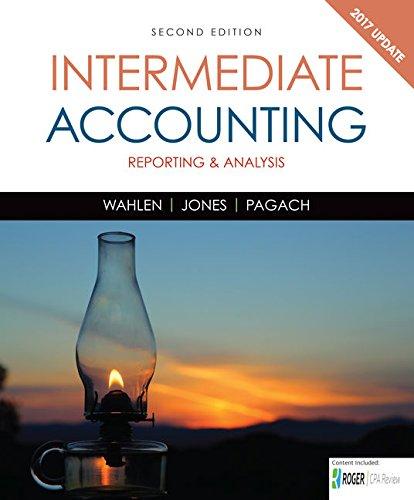
Concept explainers
1.
Calculate the ending inventory for LIFO cost if single inventory pool is used.
1.
Explanation of Solution
Cost index: Cost index refer to the index which relates the inventory cost of current year with the base year. The cost index is usually prepared with a sample from the total inventory.
Double-extension method: Under the double-extension method of cost index, the ending inventory of the current year are valued at the current year costs and related with the base year’s cost.
Calculate the ending inventory in units:
| Particulars | Product X | Product Y | Product Z |
| Beginning inventory | 30,000 | 10,000 | 25,000 |
| Add: Net Purchases | 110,000 | 100,000 | 75,000 |
| Units available for sale | 140,000 | 110,000 | 100,000 |
| Less: Sales | (90,000) | (85,000) | (70,000) |
| Ending inventory | 50,000 | 25,000 | 30,000 |
Table (1)
Calculate the cost index:
Calculate the ending inventory at the Base year cost:
Calculate the increase in inventory at the Base year cost:
Calculate the layer increase in inventory at the Current year cost:
Calculate the LIFO ending inventory cost:
Thus, the ending inventory for LIFO cost if single inventory pool is used is $374,033.
2.
Calculate the ending inventory for LIFO cost if three inventory pools are used.
2.
Explanation of Solution
Calculate the cost index for Product X:
Calculate the ending inventory at the Base year cost for Product X:
Calculate the increase in inventory at the Base year cost for Product X:
Calculate the layer increase in inventory at the Current year cost for Product X:
Calculate the LIFO ending inventory cost for Product X:
Thus, the ending inventory for LIFO cost for Product X if three inventory pools are used is $222,500.
Calculate the cost index for Product Y:
Calculate the ending inventory at the Base year cost for Product Y:
Calculate the increase in inventory at the Base year cost for Product Y:
Calculate the layer increase in inventory at the Current year cost for Product Y:
Calculate the LIFO ending inventory cost for Product Y:
Thus, the ending inventory for LIFO cost for Product Y if three inventory pools are used is $91,252.
Calculate the cost index for Product Z:
Calculate the ending inventory at the Base year cost for Product Z:
Calculate the increase in inventory at the Base year cost for Product Z:
Calculate the layer increase in inventory at the Current year cost for Product Z:
Calculate the LIFO ending inventory cost for Product Z:
Thus, the ending inventory for LIFO cost for Product Z if three inventory pools are used is $60,500.
Calculate the LIFO ending inventory cost:
Thus, the ending inventory for LIFO cost if three inventory pools are used is $374,252.
Want to see more full solutions like this?
Chapter 7 Solutions
Cengagenowv2, 1 Term Printed Access Card For Wahlen/jones/pagach’s Intermediate Accounting: Reporting And Analysis, 2017 Update, 2nd
- Which of the following errors will cause the trial balance to not balance?A. Omission of a transactionB. Entry posted twiceC. Transposing digits in one sideD. Debiting one account and crediting anotherarrow_forwardMime Delivery Service is owned and operated by Pamela Kolp. The following selected transactionswere completed by Mime Delivery Service during October:1. Received cash from the owner as an additional investment, $7,500.2. Paid creditors on account, $815.3. Billed customers for delivery services on account, $3,250.4. Received cash from customers on account, $1,150.5. Paid cash to the owner for personal use, $500.Required:Indicate the effect of each transaction on the accounting equation elements (Assets, Liabilities,Owner’s Equity, Drawing, Revenue, and Expense) by listing the numbers identifying the transactions,(1) to (5). Also, indicate the specific item within the accounting equation element that is affected, i.e.(1) Asset (Cash) increases by $; Owner’s Equity (Pamela Kolp, Capital) increases by $.arrow_forwardWhen a company incurs an expense but does not yet pay it, what is the entry?A. Debit Expense, Credit CashB. Debit Liability, Credit ExpenseC. Debit Expense, Credit LiabilityD. No entry needed helparrow_forward
- When a company incurs an expense but does not yet pay it, what is the entry?A. Debit Expense, Credit CashB. Debit Liability, Credit ExpenseC. Debit Expense, Credit LiabilityD. No entry neededarrow_forwardDont use ai What is the effect of writing off an uncollectible account under the allowance method?A. Increases net incomeB. No effect on total assetsC. Decreases revenueD. Increases expensesarrow_forwardWhat is the effect of writing off an uncollectible account under the allowance method?A. Increases net incomeB. No effect on total assetsC. Decreases revenueD. Increases expensesi need help ..arrow_forward
- Get the Correct Answer with calculation of this General Accounting Questionarrow_forwardI am trying to find the accurate solution to this general accounting problem with appropriate explanations.arrow_forwardI need help with this general accounting problem using proper accounting guidelines.arrow_forward
- I am looking for the correct answer to this general accounting problem using valid accounting standards.arrow_forwardHello Dear Tutor Please Need Answer of this Question as possible fast and Correctarrow_forward15. The balance in the dividends account is closed to:A. CashB. RevenueC. Retained EarningsD. Common Stock dont use AIarrow_forward
 Intermediate Accounting: Reporting And AnalysisAccountingISBN:9781337788281Author:James M. Wahlen, Jefferson P. Jones, Donald PagachPublisher:Cengage Learning
Intermediate Accounting: Reporting And AnalysisAccountingISBN:9781337788281Author:James M. Wahlen, Jefferson P. Jones, Donald PagachPublisher:Cengage Learning Financial Accounting: The Impact on Decision Make...AccountingISBN:9781305654174Author:Gary A. Porter, Curtis L. NortonPublisher:Cengage Learning
Financial Accounting: The Impact on Decision Make...AccountingISBN:9781305654174Author:Gary A. Porter, Curtis L. NortonPublisher:Cengage Learning Financial AccountingAccountingISBN:9781305088436Author:Carl Warren, Jim Reeve, Jonathan DuchacPublisher:Cengage Learning
Financial AccountingAccountingISBN:9781305088436Author:Carl Warren, Jim Reeve, Jonathan DuchacPublisher:Cengage Learning- Principles of Accounting Volume 1AccountingISBN:9781947172685Author:OpenStaxPublisher:OpenStax College





